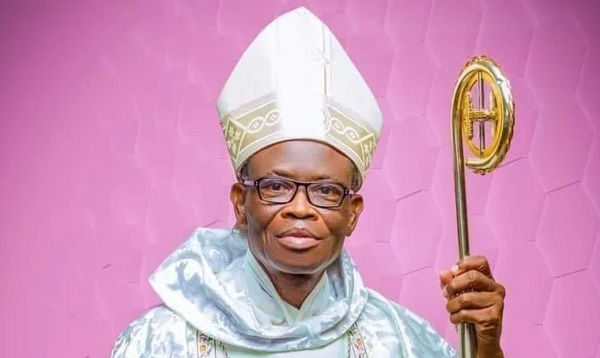In Isolated World of Pastors, Churches Mum on Troubling Clergy Suicides
In the fall of 2013, the Rev. Teddy Parker Jr.’s wife found him in the driveway of their Warner Robins home in Georgia with a “self-inflicted gunshot wound.” Many were stunned.
Parker never believed in suicide and often admonished his parishioners against it.
“I’m very surprised because he didn’t preach that. He preached totally against it. It’s something that the congregation don’t really understand,” Russell Rowland, a member of the Bibb Mount Zion Baptist Church in Macon, Georgia, where Parker was leader, said at the time.
“Everybody is just kind of stunned right now. I think a lot of people are just trying to understand why that happened. We’re just praying to the Lord for guidance on this,” he said.
A few months after Parker’s death in April 2014, then pastor of Community Bible Church in High Point, North Carolina, Robert McKeehan, 42, was found hanging inside his home. He was the same age as Parker and was also a father of two.

These pastor suicides have not just been unfortunate isolated events.
An alarming number of pastors have taken their own lives in the last five years. And despite the increasing prevalence of suicide nationally, and the troubling rates at which the epidemic has been affecting certain groups of clergy, many churches remain silent on the issue.
Parker’s suicide came just three weeks ahead of Pastor Ed Montgomery’s in November 2013. Three months later it was the Rev. Allen “Tommy” Rucker. Two months after that it was Pastor Robert McKeehan. Less than a month later is was Pastor DB Antrim. Then three months later it was the Rev. William “Bill” Scott who also killed his wife Charlotte.
Less than a year later in May 2015 it was Phil Lineberger, former president of the Baptist General Convention of Texas and pastor of Sugar Land Baptist Church. Three months after that in August 2015 it was the Rev. Seth Oiler. About a year later in August 2016, it was Pastor Lawrence “Larry” DeLong. Less than six months later and just before Christmas in December 2016 it was Pastor Daniel Randall who also took the life of his 27-year-old daughter Claire. Then last December, after a brutal struggle with his mental health, suicide expert and senior pastor of Christ the Rock Community Church in Menasha, Wisconsin, Bill Lenz, took his life too.
Troubling Statistics
A 2016 data brief from the CDC’s National Center for Health Statistics said from 1999 through 2014, the age-adjusted suicide rate in the United States increased 24 percent from 10.5 to 13.0 per 100,000, with the pace of increase greater after 2006. Suicide rates, the brief said, increased for both males and females and for all ages 10–74. The rates are at the highest levels in nearly 30 years, a federal data analysis showed. Data illustrating this jump shows that in raw numbers the total number of people who died by suicide nationally jumped from 29,199 in 1999 to 42,773 in 2014.
While no one knows for sure the exact number of pastors who are among those who die by suicide, the National Occupational Mortality Surveillance database, which includes records on almost 4 million deaths during the period 1999, 2003–2004, and 2007–2012, provides a studied estimate on how many pastors are affected.
In examining deaths by profession, this CP reporter looked at data provided to The National Institute for Occupational Safety and Health by 23 selected state vital statistics offices and the National Center for Health Statistics.
NIOSH calculates the proportionate mortality ratios or PMR when data for the population at risk are not available and death rates cannot be computed.
“A PMR will tell you if there is a greater proportion of suicides in a profession compared to the general population. A PMR above 100 is considered to exceed the average background risk compared to all occupations,” Julie Eschelbach, health communications specialist for the CDC’s National Center for Injury Prevention and Control, explained.
Looking at the data for all clergy combined regardless of sex or race, the PMR of 70 does not exceed the average background risk. When the data is broken down by sex and race, however, black male and white female clergy members showed elevated PMRs of 110 while the PMR for white male clergy stood at 52.
Counseling experts who track research on mental health among pastors are also raising concerns.
While acknowledging that he wasn’t aware of any specific studies that looked specifically at suicides among pastors, Dr. Jared Pingleton, vice-president of professional development at the American Association of Christian Counselors, who is a licensed clinical psychologist and a credentialed minister, said of the suicide rate among clergy, “I wouldn’t be surprised if it’s not at least as high as the general population. I wouldn’t be surprised if it’s higher.”
Chuck Hannaford, a clinical psychologist who consults for the Southern Baptist Convention, told The Gospel Coalition in 2016 that he believes the rate of pastor suicides has increased during his 30 years of practice and suggested the problem was worsening.
“Being a pastor is a dangerous job,” he said. “Especially in certain evangelical circles, where you have more of a fundamentalist orientation theologically, you find pastors who will reduce their depression or their negative thought processes to strictly spiritual problems.”
The Silence
The Christian Post reported on each of the pastor suicides highlighted in this report, but church staff caring for the affected families and congregations all declined to discuss the matter publicly, especially in the days and weeks following the tragic events.
For example, Lakesia Toomer, a Bibb Mount Zion Baptist Church official, told CP in 2013, “We consider this a private matter between the family and the BMZ church family. We kindly ask that the public respects our privacy at this time.”
More than four years later, when asked if he was willing to share anything from the experience of losing a pastor to suicide in February, Paul Little, the church’s new senior pastor, said the time wasn’t yet right.
“I’d be willing to do something. Just trying to make sure the family is comfortable. I think it’s necessary for us to tell the story but we also have to be sensitive to the timing as well,” Little said.
Pingleton explained that the reluctance of churches to openly discuss suicide and other mental health issues is one of the reasons the problem endures.
“I attribute what you experienced to what I called the unholy trifecta — silence, shame and stigma — about mental health issues and especially suicide being the chief of those, there is a deafening silence,” he said.
“And there is pervasive shame which causes us to hide from Genesis 3 on, and then there is this consistent stigma for mental and relational health problems, because suicide is a relational thing. It’s not just a mental thing. It is often referred to as the ultimate act of self-centeredness, for example, or the ultimate act of last revenge, to play the quintessential or penultimate guilt trip on one’s loved ones,” he continued.
“We need to end the silence, eradicate the shame and erase the stigma because there’s still so much [to deal with]. It’s against the rules to struggle in a church. You just don’t have enough faith, you don’t read the Bible enough, you need to pray more. We would never say that to somebody with diabetes or cancer or that you shouldn’t take medication,” he said.
A 2014 LifeWay study found that 66 percent of Protestant senior pastors seldom discuss issues of mental health with their congregations. That number includes 49 percent who rarely or never address the issue. Just 16 percent speak about mental illness once a year while 22 percent are reluctant to help those who suffer from acute mental illness because it takes too much time.
Jerram Barrs, professor of Christian Studies & Contemporary Culture who is also a resident scholar of the Francis A. Schaeffer Institute at Covenant Theological Seminary in St. Louis, Missouri, says he has experienced the death of three pastors who were either close friends or acquaintances over his 72 years of life.
He agrees that “many churches don’t handle emotional and mental problems” well and silence on the issue is a major problem.
“I think almost all churches need to handle it better. There are very few where people who are very severely or mentally broken who feel comfortable and welcome (in churches),” Barrs said. “Richard Baxter said the church is a mere hospital in the present age and we’d do well to remember that. A good church should be like that.”
In discussing the suicide of a pastor who was a close friend that happened nearly 25 years ago, Barrs asked for discretion in highlighting his name or even referencing the friend’s church because the pastor had been battling personal sins which most of his congregation did not know about.
The Pastor’s Burden
Mark Medina is a transitional pastor who is helping Valley Presbyterian Church in Green Valley, Arizona, recover from the 2016 suicide of their late pastor, Lawrence “Larry” DeLong.
While he was not authorized to discuss DeLong’s case, he said that in decades of coaching other pastors he has found that many pastors struggle because they don’t know how to self-differentiate.
“I work with high-conflict churches and a lot of churches I know, in the past that I have worked with, they don’t know how to deal with conflict. And that’s a lot of pastors that do not know how to deal with conflict. A lot of them don’t have the skillset, and I’m talking about all kinds of pastors,” he said.
“A lot of pastors lose their clergy objectivity that they get so enmeshed in a system they can’t see their way through. A lot of the folks that I’ve worked with in helping them get out of difficult situations is to give them some skills on how to create an environment where you can have discussions and not take it personally,” Medina continued.
“A lot of seminaries and Bible colleges do not teach people how to deal with conflict or to even mediate. So yes, you can have the Gospel of Jesus Christ as your guiding light and things like that, but you still have to work in a church that is full of broken people.
“The pastor has to understand that he or she is also a broken person and has to rely on God and also has to have the skillset to deal with a particular church. So that’s why I’m always about working with pastors,” he said.
To highlight the burden of the various roles that clergy are often called to play, researchers in a 2002 report called Mental Health Issues Among Clergy and Other Religious Professionals: A Review of Research, cite the work of Dennis Orthner, a social work professor at the University of North Carolina on United Methodist ministers.
Orthner’s national survey of 2,000 United Methodist ministers, found that while pastors found their work to be rewarding it was also seen as demanding. He noted that among their many responsibilities, pastors are required to fill a variety of roles at once “including administrator, teacher, preacher, counselor, and fundraiser. There are few times when pastors are not ‘on call,’ and they often must deal with persons who are severely troubled.”
In their role as counselors, the report notes, “researchers have found that pastors are the primary mental health counselors for tens of millions of Americans. They are frequently the first persons to help with a family or marital problem or a personal crisis.”
The National Institute of Mental Health also found that clergy are as likely as mental health specialists to have a person with a Diagnostic and Statistical Manual of Mental Disorders diagnosis come to them for help.
When it came to clergy and their own mental health, however, the authors of the study who looked at five databases of medical, nursing, psychology, religious and sociological research on a group of 250 religious professionals spanning the period 1975–2000, found Protestant clergy suffered the most work-related stress and had low levels of coping support.
“Among the group, Protestant clergy had the highest overall work-related stress and were next to the lowest in personal resources to cope with the occupational strain. Ministers, especially those who were sole pastors, indicated that they frequently felt isolated and had few friends and colleagues to … turn for help. Many Protestant clergy expressed concern about their inability to set time limits, show their vulnerability, or express appropriate anger with parishioners,” the report said.
While most United Methodist pastors were found to have high levels of self-assurance, researchers raised concern about “the nearly one in six clergy who showed signs of serious distress with their high levels of isolation, loneliness, fear, abandonment, anger, and boredom. Pastors without a strong sense of well-being and personal adjustment will have a hard time guiding others in their spiritual development,” the report said.
Family Problems and Unrealistic Expectations
Ministry was also found to place much strain on the marriages of clergy who are expected to oftentimes meet numerous and unrealistic expectations from their congregations, the study said.
“Researchers found that almost one in three pastors leaving ordained ministry had family difficulties, and clergy rank third in percentage among professionals who are divorced,” the review said.
Some 21 percent of UMC clergy studied cited poor communication as a major problem and 43 percent cited inadequate companionship.
“The most often cited areas of discord were: inadequate time with spouse, lack of affection, financial problems, not enough time with children, and sexual relations. Marital conflict was most common among young pastors and those unhappy in their work and with their financial situation,” the report explained.
It was further noted that many pastors and their families are “placed on a pedestal” that makes it difficult for them to form normal friendships.
This situation often results in feelings of loneliness and isolation in clergy families that lead to the “fish bowl” effect of living in the public eye. This limited social support creates stress for many clergy families.
Stress and Sexual Misconduct
Another study of Southern Baptist senior pastors working in six southeastern states also linked stress among pastors to sexual misconduct with adult members of the church.
“They found that high levels of stress and sexual misconduct were strongly associated. Ministers with chronic stress from several sources were at the greatest risk of such misconduct. For example, clergy in the midst of a personal crisis (such as painful marriages or other emotional difficulties) are particularly vulnerable, especially if they are unable to reach out for needed counseling,” the report said. “In addition, those with less confidence in their training as counselors were more likely to engage in sexual misconduct than those with more confidence in it.”
The Aftermath of a Pastor Suicide
In recalling the aftermath of the suicide of his pastor friend, Barrs, who delivered his eulogy, explained how it affected him personally as well as the congregation at large.
“Well, obviously it is very, very painful. I think people, many of them (congregants), had become believers, all of them had been discipled by him and he had been their pastor and teacher for many years. He was very greatly loved. He’d been a good pastor,” Barrs said.
“I think many people of course felt betrayed. … But I will never forget the service. I think one of the essential things in such a setting is I think you encourage people to give voice to the pain that they’re feeling rather than to cover it over. And I preached that day on Lamentations Chapter 3 where Jeremiah speaks very passionately and very, very bluntly and painfully about his sorrow for his people. … Yet at the end of the passage there is hope,” he said. “In my sermon I was encouraging the congregation to express their grief and also their anger. The Lord’s quite capable of handling that and to be completely honest about the way they felt.”
In order for a church to heal from a pastor’s suicide, Barrs explained that, in his experience, people should be honest and open about how they really feel. That honesty, he said, can sometimes be expressed in unexpected ways.
He then recalled how the congregation reacted when they went to bury his friend at the graveyard.
“And then they went to the graveyard and I’ve never seen anything like it after,” he said of the burial service he had expected to be brief.
“… [I] put the first trowel full of dirt on his coffin and some of his family who had come from other parts of the world did the same. Then the members of the congregation each started one by one putting a trowel full of dirt on the coffin and they just started singing hymns. They actually were there for, I think, what must have been three hours or so until the whole grave, at just a trowel full at a time [was full],” he said.
“They were singing the whole time. I don’t think the undertakers had ever seen anything like it either. And it was just an outpouring of pain and love. And it just was extremely moving, and I think that encouraging the congregation like that to express their sorrow was very important when somebody is grieving anything rather than pretending everything is fine. That was a very important time in the healing of the congregation and they lost very few members over the next year or two,” he said. “The church just carried on basically in a very straight line. There were a couple of people who left and there were some other reasons for that. Not because of their sense of anger or grief or betrayal because they were encouraged to express that.”
Barrs explained that the suicide of a pastor is not something that people forget, even after 25 years.
“I still talk to people about it from time to time who were elders with him and labored alongside him. It’s just a sorrow that never goes … like losing a child. It’s always still there for the rest of your life,” he said.
Changing Church Culture, Remembering Pastors Are Human Too
To help break the lure of suicide as a solution for pastors, experts including Pingleton and Barrs agree that churches and seminaries must improve the way they address issues of mental health in training schools and from the pulpit. Pastors also need to develop a deeper self-awareness and learn how to create boundaries in their professional roles.
Bill Lenz, 60, the late senior Pastor of Christ The Rock Community Church in Menasha, Wisconsin.
“What the research shows very clearly is at that one out of four Americans suffer from major mental illness, and one out of four pastors also suffer from a major mental illness. So that stat suggests very strongly that pastors are certainly not supermen or women but they are humans called to serve in a specific way,” Pingleton said.
“They themselves also suffer from the same if not more of the same issues of their parishioners because of the high stress, the very high degree of isolation and the other unique factors endemic to professional ministry. As both a clinical psychologist as well as a third-generation minister myself. Those issues very much resonate to pastors whenever you are talking with them in a way they feel safe that they can look at their stressors and deal with their issues,” he continued.
“What the research shows very clearly, even within the churches is that the best defense is a good offense. That is to talk about mental health issues,” said Pingleton who recently authored The Struggle Is Real a comprehensive resource that provides churches with practical tools to care for people struggling with mental and relational health issues in a biblically sound and emotionally healthy way.
Barrs explained that in his role as a seminarian training pastors, he tries to prepare them as best as he can for the real world challenges that comes with ministry and he believes more seminaries need to make sure they are addressing issues of mental health as well.
“I spend my life teaching theology of ministry and challenging students to never give these simplistic, superficial answers to people who are hurting but to rather weep with them and listen to them and not seek to be able to fix their problems because many people have problems we can’t fix,” he said.
“That’s where Francis Schaeffer was very helpful. Working with him for years and years, he used to say what we’re trying to do isn’t difficult, it’s impossible. We can’t save anybody … but God can so just stop trying to give superficial answers to people’s problems. Many of our churches need to learn that and some pastors need to learn it. We are trying to send pastors out who are understanding and who will be sympathetic and who have enough knowledge of their own brokenness so they don’t try to heal other people’s brokenness lightly,” Barrs explained.
Research also shows that among other things, churches need to better screen potential candidates for ordination and emphasize the importance of self-care for existing clergy.
Last December, Bill Lenz, a Wisconsin pastor who dedicated much of his life to suicide prevention and whose ministry at Christ the Rock Community Church in Menasha was inspired by his dedication to the issue, stunned family and friends when he took his own life at 60.
In perhaps the only public comment from his family embedded in his obituary they urged those fighting depression against trying to fight it alone.
“Bill has never fallen victim to depression in the past, but has battled it with a vengeance for the last three months. He sought and accepted help, but unfortunately for all of us, it wasn’t enough to give us more time with him here on earth. Our hope in Jesus Christ is the same today as it was before this nightmare began. Please, if you’re struggling with depression, don’t go at it alone. Seek help,” they warned.





